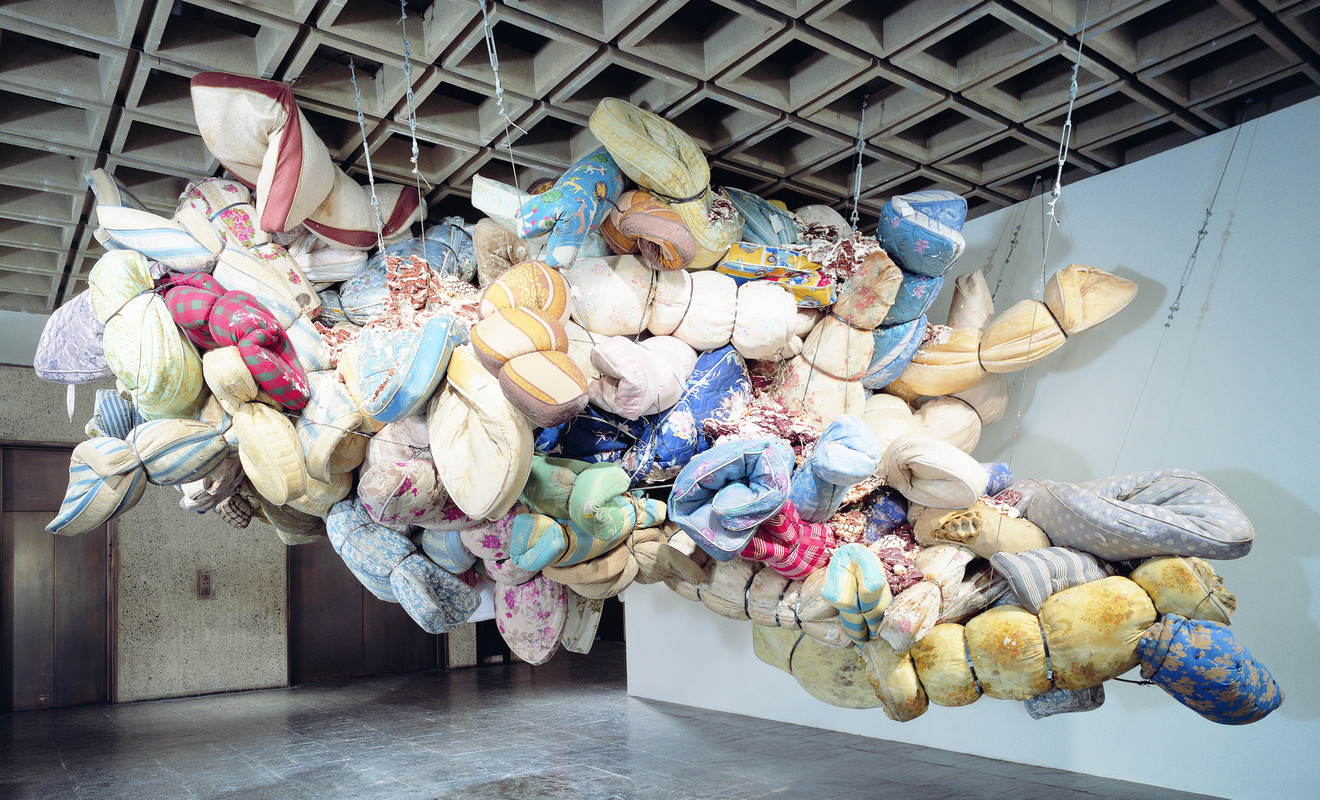Mattresses and Cakes is a monumental ceiling installation combining objects that are, in many ways, strange bedfellows. A tangle of 59 mattresses and 299 Entenmann’s cakes comprise the sculpture, and the overall effect is both humorous and aggressive.
To create the piece, Rubins and FWM salvaged old mattresses from thrift stores and the Salvation Army, and bound each with a metal strap using an industrial strapping machine. Rubins then bundled them together to form an abstract sculpture, with rolled ends of mattresses jutting out into space and bulbous clusters weighting the piece in all directions. This feat of engineering (for all of its weight, the sculpture is suspended off the ground) was then smeared with cake so the patterned surfaces of the mattresses mixes with clumps of sweet junk food. This combination of recycled debris and mass-produced food from our excessive consumer culture is typical of Rubins’ artistic vocabulary. She has acknowledged the sprawling development and wasteful consumption of Southern California as an influence, but as the art critic Peter Schjeldahl has written about her work, it is not sculpture that lingers solely on politics. Discussing the formal qualities of her 1995 Airplane Parts, he wrote:
The work’s enthralling details serve a formal end like that of the flung paint in a Jackson Pollock, giving an inch-by-inch reality check to an overwhelming sublimity. You can do with Rubins’ piece the art-loving dance of near and far, looking at it from a distance and up close by turns . . . The rewards won’t stop. (“Air fill,” The Village Voice, February 14, 1995)
